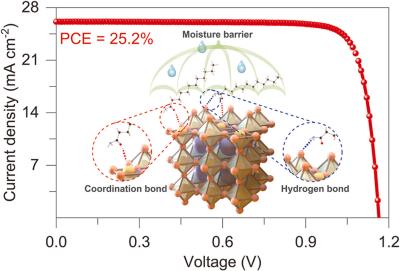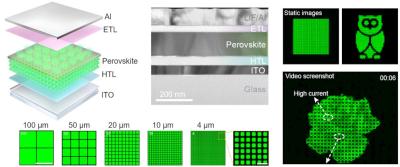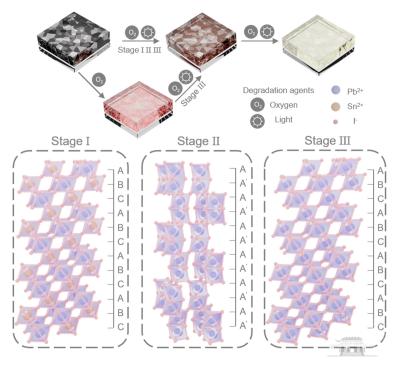Perovskite solar cells enable hydrocarbon synthesis from CO2
Researchers from the University of Cambridge, Lawrence Berkeley National Laboratory and the University of California, Berkeley, have developed a novel way to make hydrocarbons – powered solely by the sun.
a) Architecture of the tandem PEC device. b) A schematic illustration of the nanoporous electrode. Image credit: Nature Catalysis
The device they developed combines a light absorbing ‘leaf’ made from a perovskite solar cell, with a copper nanoflower catalyst, to convert carbon dioxide into useful molecules. Unlike most metal catalysts, which can only convert CO₂ into single-carbon molecules, the copper flowers enable the formation of more complex hydrocarbons with two carbon atoms, such as ethane and ethylene — key building blocks for liquid fuels, chemicals and plastics.









